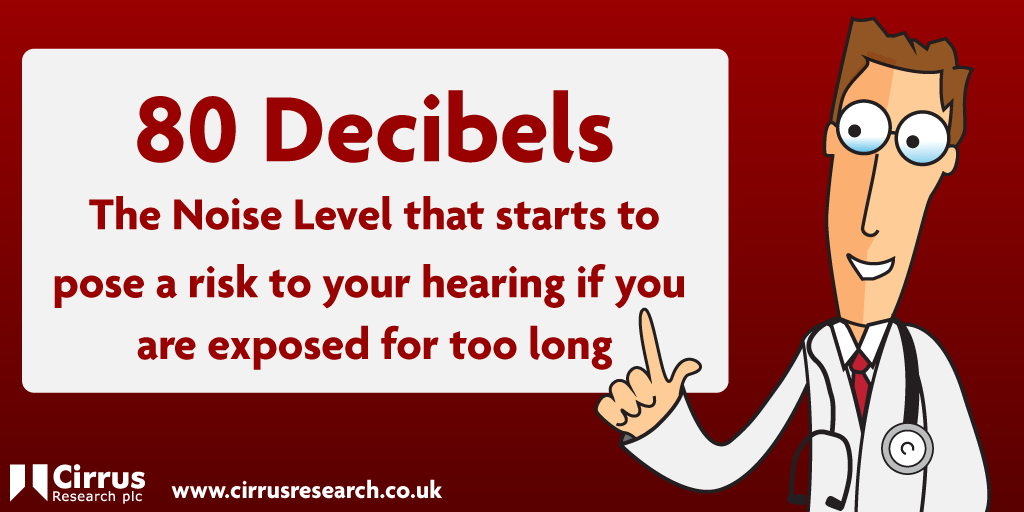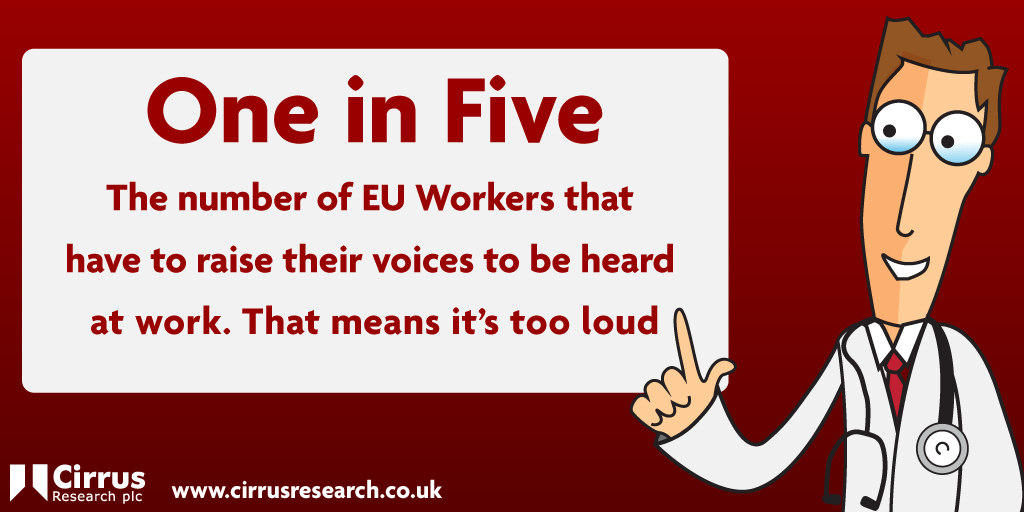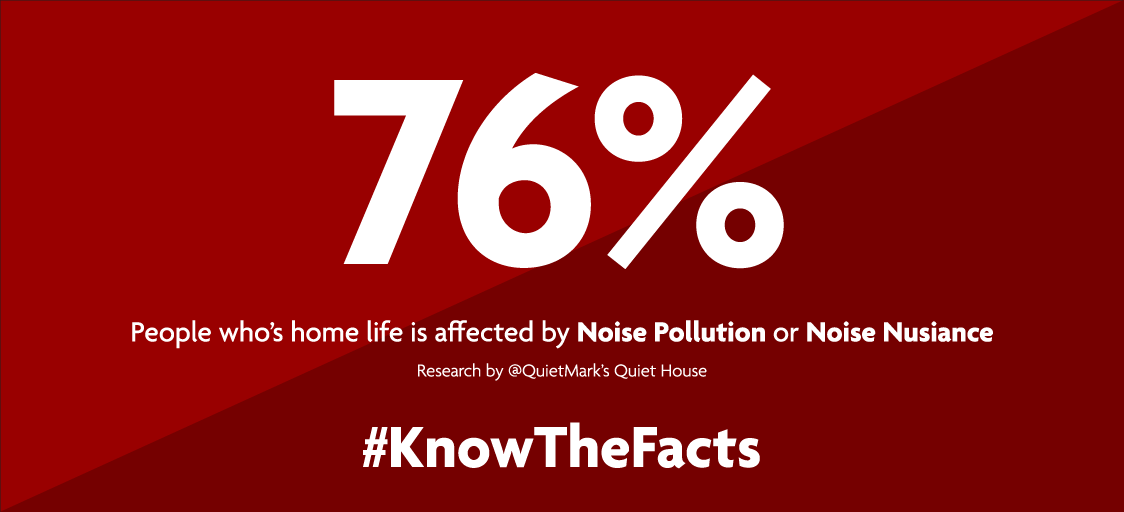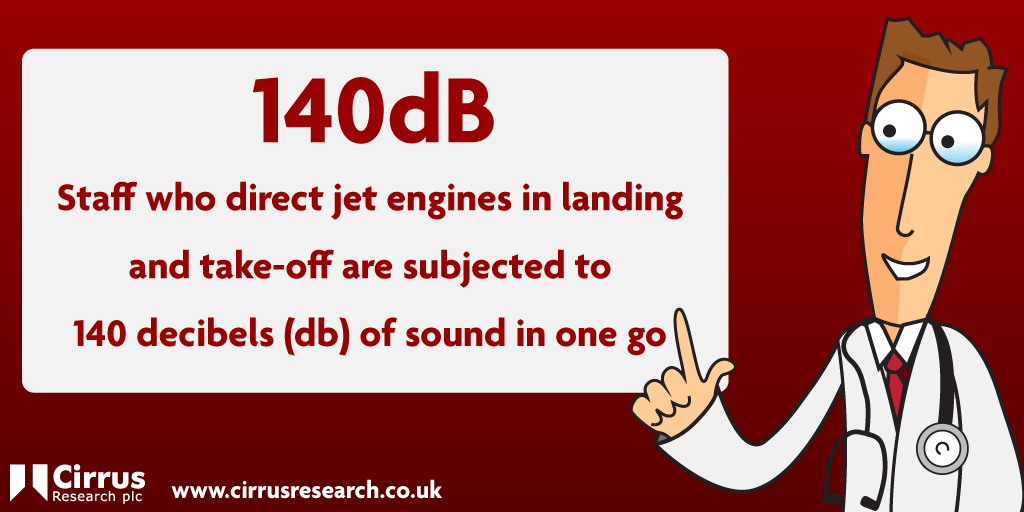Itâs International Noise Awareness Day â Hereâs 5 Facts About Noise
Wednesday 29th April 2015 is International Noise Awareness Day. A day when people, organisations and governments around the world raise awareness of unwanted noise that can affect your health. To commemorate this day, hereâs 5 noise facts.
1. The Definition of Noise is âUnwanted Soundâ
Technically, there is actually no such thing as a noise. Noise is perceived as an unwanted sound. This makes it a very subjective matter that affects individuals, communities and businesses around the world differently.
Sound is defined as any pressure variation in air, water or other medium that your ear can detect. Regulations such as the 2005 Control of Noise at Work Regulations do provide suggested safe levels for the amount of sound pressure you can exposed to over a period of time.
2. 80 Decibels is the Action Level for Noise Exposure

Why do we care so much about noise? In the long-term, exposure to too much noise can cause noise-induced hearing loss and tinnitus, as well as stress. Stress can then lead to other health problems.
The level at which noise can start to become harmful to your hearing is 80 dB for 8 hours. Thatâs equivalent to a domestic vacuum cleaner.
As the noise level increases, the amount of time you can be exposed to it before causing damage to your hearing decreases.
- 85 dB â 8 Hours
- 88 dB â 4 Hours
- 91 dB â 2 Hours
- 94 dB â 1 Hour
- 97 dB â 30 Minutes
- 100 dB â 15 Minutes
- 103 dB â 7.5 Minutes
- 106 dB â 3.75 Minutes
- 109 dB â 1.875 Minutes
- 112 dB – 56 Seconds
- 115 dB â 28 Seconds
Each increase of 3 dB represents a doubling of the noise level. Thatâs because decibels are measuring on a logarithmic scale. So, increase the noise level by 3 dB, reduce the time by half.
3. One in Five EU Workers Are Affected by Noise at Work

The European Agency for Safety and Health at Work predicts one in five EU workers have to raise their voices to be heard at work. This is one of the key warning signs that you have a noise at work problem that needs investigating.
The risk of not investigating this is great. You or your employees could be subjected to high noise levels that will damage your hearing over a period of time. If this is the case, the business could be open to prosecution or compensation claims by the individuals affected.
The best way to keep a check on noise at work is to carry out regular noise risk assessments. Youâll need to identify individuals who might be affected by noise and measure their exposure using either a sound level meter or a noise dosimeter.
If you find that people are exposed to dangerous noise levels, you must take steps to control the risks. This might involve changing shift patterns to reduce the time people or exposed to high levels of noise, investing in quieter machinery or sound barriers.
If youâve made every effort to control the noise but the levels are still too high, you can introduce hearing protection for your workforce. If you use a sound level meter with octave band analysis, youâll be able to receive recommendations for protection using noise analysis software.
For a full breakdown of investigating noise at work, download our eBook: 5 Biggest Noise at Work Mistakesâ¦.and How to Fix Them.

4. 76% Affected by Noise Nuisance

Itâs estimated that up to 76% of the UK population is effected by noise pollution or noise nuisance.
This can be caused by excessive noise from construction sites, airports, wind farms of industrial areas. Noise nuisance can also be a lot closer to home in the form of noisy neighbours, barking dogs and even karaoke nights.
If youâre affected by a noise nuisance issue, itâs always recommended that your approach your local council of Housing Association first. Theyâll be able to use equipment like a noise nuisance recorder to accurately measure, record and analyse reported cases of noise nuisance.
5. The Noisiest Job Isâ¦â¦

Airport ground staff. Anyone living near an airport or under itâs flight path will tell you how noisy it can be. Imagine working underneath planes taking off all day.
Airport ground staff are commonly exposed to 140+dB every time an aircraft takes off. There isnât much airports can do to control the noise but manufacturers are trying to make air travel quieter and quieter. For this reasons, youâll usually see worker wearing hearing protection and communicating with hand signals.
So, thatâs it. 5 Noise Facts to commemorate International Noise Awareness Day.
Latest posts by Craig Storey (see all)
- Meet our new rental partner – Accudata Ltd - 2nd March 2023
- Environmental noise monitoring, anytime, any place and anywhere - 25th October 2021
- Cirrus Research is attending the Health & Safety Matters Live Digital Conference This October - 22nd September 2021
